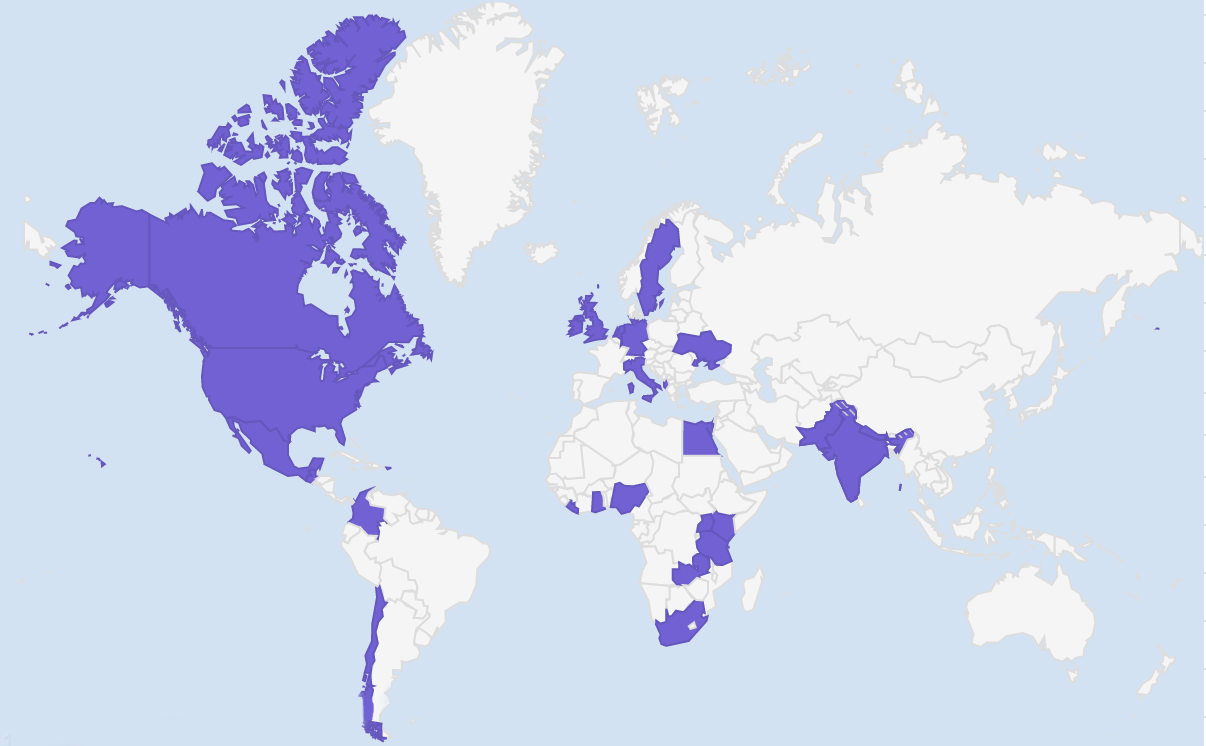BRIDGE Insights – The demand for digital skills in a COVID-19 world

95% of the nonprofits who applied to our BRIDGE programme have been affected by COVID-19. In a world seemingly in constant crisis, technology has never had a more vital role to play.
That’s why we’ve launched our COVID-19 BRIDGE cohort in partnership with GlobalGiving and the support of The Gates Foundation to equip charities with the skills and the support they need to respond, recover and become resilient.
Starting from today, we want to take everyone on a journey through a series of blogs and videos to share insight into how charities and foundations are reacting to the crisis.
We’re starting with some insights from the hundreds of applications to our BRIDGE programme.
There is a global demand to be more digital right now
We assumed that nonprofits felt an urgency to be ‘more digital’ right now. However, the response to our BRIDGE programme was beyond our expectations.
We received 555 unique applications in just one week – over five times oversubscribed
Organisations using GlobalGiving were invited to send their applications sharing more details about their organisation and why they want to be part of the BRIDGE programme.
The Lightful team looked through all individual applications to find organisations who would benefit the most. The selection criteria were based on the organisations’ current digital presence, number of social profiles, quality of website, readiness to be part of the programme and the number of people who would benefit from BRIDGE.
Demand is everywhere

Nonprofits all over the world understand the importance of building their digital skills to survive the current situation. For example, 52% of applicants were from organisations in the global south (Africa, Asia & Pacific, Latin America).
Working with a global cohort is not new to us as we’ve successfully run similar cohorts over the last two years. We address the challenges of different time zones and sometimes different languages and take these things into consideration when deciding our application criteria.
31% of all applicants were based in the United States.

It’s interesting to see that the majority of US states included a significant number of applicants. As the situation becomes more challenging & complex in the US, the need is even more acute – we are working closely with organisations fighting for racial equality to support them as much as possible right now.
What are the most popular cause areas?

We used GlobalGiving’s cause classification to create ‘themes’ for the applicants.
In most cases, charities were dedicated to more than one theme, suggesting a wide variety of support, programmes and services offered.
Surprisingly perhaps, health was only the fourth biggest theme area, showing again how this global health pandemic has far-reaching consequences – and usually on those groups already marginalised and in most need of support already.
It’s interesting to note that over a third of applicants focused primarily on education, children and women & girls.
However, this could also be due to the different ways charities can provide support during COVID-19.
The big impact of COVID-19

We wanted to support charities that have been directly impacted by COVID-19 or those that are providing critical support right now. So we asked applicants to share how COVID-19 affected their work and their future.
95% of all applications have been affected by COVID-19
It’s interesting to note that 47% of them are directly responding to the crisis during the pandemic.
It’s critical that we support these organisations and their vital work to survive and support their service users by improving their digital skills.
Half the charities posted a fundraising project in 2020

Looking at our selected participants in May’s BRIDGE cohort, 35% of charities were founded before 2000. And yet some charities even have a long history which stretches as far back as the 1850s – it’s a real mix.
All charities joined the Global Giving Platform in the last ten years, with 21% having joined in 2019.
What’s interesting is that half have already posted a fundraising project in 2020. For the other half, understanding why they haven’t and equipping them with the tools to make successful campaigns is a core part of the BRIDGE programme.
What’s next
We’ve noticed from the very first application that it’s now more important than ever to support charities fighting towards important causes.
Our next blog will provide more insights into their confidence and concerns, and also their digital skills and what they are looking to improve.
Latest articles

In a world of growing uncertainty, small and local non-profit organisations often find themselves with competing priorities and struggle to plan how to allocate their available resources. Despite the increasing demand for their vital work, they are not always able to allocate the funds they receive to strategic planning and future growth.

As the world becomes more digitally-focused, it’s essential for nonprofits to have a digital presence. With more and more options for online engagement, we know that this can be challenging for nonprofits to tackle. But, we also know that it is a huge opportunity to increase audience engagement, awareness and fundraising. To help nonprofits navigate this, we’re going to explore the “whys” and “hows” of creating a nonprofit digital strategy. We’re even providing a free digital strategy canvas to help nonprofits improve their online presence in just a few steps.
Related posts

Environmental organisations around the world are working hard to tackle climate change, often with limited resources. What’s the role of digital communications in this battle and what support do they need?

We talked to Chakara Wheeler from the Community Foundation of Greater Flint to find out more about her work and her experience being part of the BRIDGE programme.
See who we help
Contact us
Want to learn more?
Email Jonathan and start a conversation





